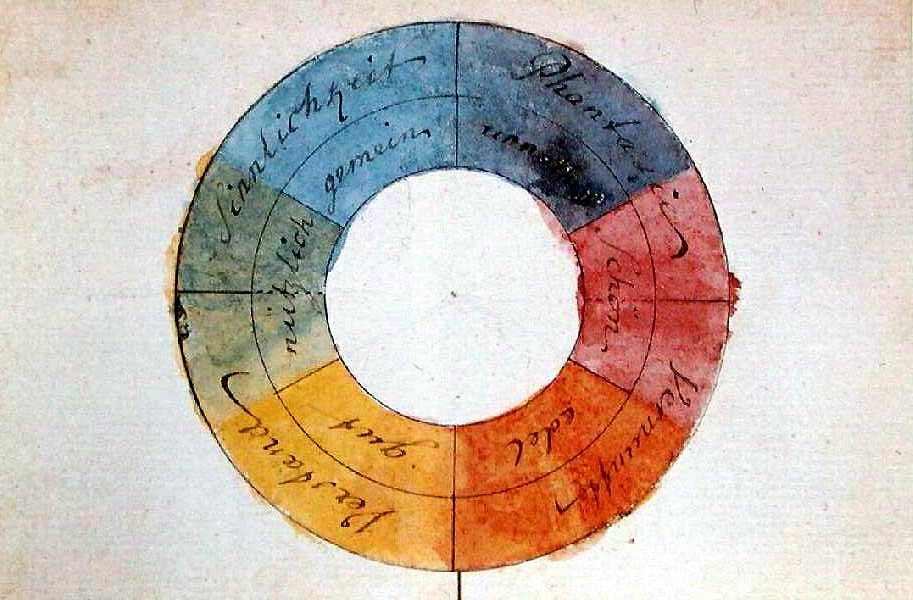
Faithful to Appearances and to Common Sense: Goethe, Whitehead, Bergson, Schelling and Teleology
“Goethe described his color theory as a “sensory-moral” account of natural phenomena such that the “physical laws” those phenomena “obey” are seen to emerge from out of one’s conscious perceptions themselves, rather than being imposed upon them from outside as in Newton’s mechanistic theories. Goethe’s scientific method “makes phenomena transparent to their own lawfulness,” as Prof. Amrine put it. Instead of the deistic-mechanistic metaphysics and calculative-quantitative methods that came with the Galilean-Newtonian scientific revolution, Goethe developed his own processual and organic approach to nature (an approach whose philosophical implications were first developed by Schelling and later made more explicit by Rudolf Steiner). His organicism was rooted in the qualitative structure-dynamics of experience itself, rather than the calculable motion of “external matter.” “External matter,” I’d argue, is among the most abstract concepts imaginable by the human mind. Goethe instead remained faithful to appearances and to common sense, as Aristotle long ago prescribed. The Faustian magician-priests of the modern techno-scientific revolution, of course, had other plans. External mechanistic matter was as real as it gets, and modern science’s job was to gain control over it. Modern science is a stunningly beautiful and devastatingly powerful belief system. We should dream it and use it more wisely than we do.”
The above passage is from an older blog post by Matt Segall on the subject of teleology in science and purpose in nature. It’s a good one. I share Matt’s affinity for the more Franco-German flavored organic teleology of of Whitehead and Bergson which, as he says, “has its modern origins in the Naturphilosophie of Goethe, Novalis, and Schelling (and its ancient origins in alchemy and hermeticism),” over the more mechanical and industrial Anglo-American conceptions. Matt also has a wonderful way of framing the goal of imaginative thinkers like Whitehead, Schelling, Bergson and Goethe; they’re goal is not to erase, explain away or reduce common sense or one’s experience of the world, but to evoke wonder and further our understandings of it. Matt remarks:
“Goethe’s natural science, like Schelling’s and Whitehead’s and Bergson’s and Teilhard’s, does not attempt to explain away meaning, purpose, and value in the universe, but rather aims to simultaneously elucidate and deepen our understanding and experience of human teleology by rooting it in the teleogenic capacity of the cosmos itself. The question is no longer “What must human meaning/purpose/value be if nature is really mechanical/dull/void?”– The question rather becomes “What must nature be such that human teloi are possible?””
I’ve written before about how I naturally drift toward the “big-picture.” So, because of this, I believe, it’s always been really hard for me to get on board with this notion of dissecting things in order to understand how something works. I get that this analytic method can be very useful for some things, but when it comes to comprehensively understanding how something works it seems we might do well to stand back, watch, listen, and experience it in action. I think John Cobb is right to point out that, during the Enlightenment, the most influential scientists chose to adopt Rene Descartes’ methods and perhaps shared his bizarre fascination with vivisection. Indigenous Theologian, Randy Woodley, has this to say about that:
“Whether Descartes’ actions of dissecting human and animal corpses influenced his philosophy or his philosophy justified his actions is not altogether clear. What is clear is that they are related. Descartes was by no means the first one in history to fail to recognize the sacredness of the whole human person or the sacredness of animals, but his actions, and the influence of other rationalists, had considerable sway on the modern, western worldview, even until today.”
Getting back to Goethe and his big picture approach, one could say that to stay true to experience or common sense, without attempting to explain away, was the essence of his method. I appreciate this very much. I mean, I do think its fine to sharply criticize, analyze, and attempt to be objective at times, as long as we do not lose sight of our common sense, everyday experience. I like the quote Matt uses from Goethe, that “The eye must be something like the sun, otherwise no sunlight could be seen.” At the end of the day, maybe all fact really is theory, and perhaps the best theory one could have is the basic law that the blue of the sky reveals to us.

0 Comments